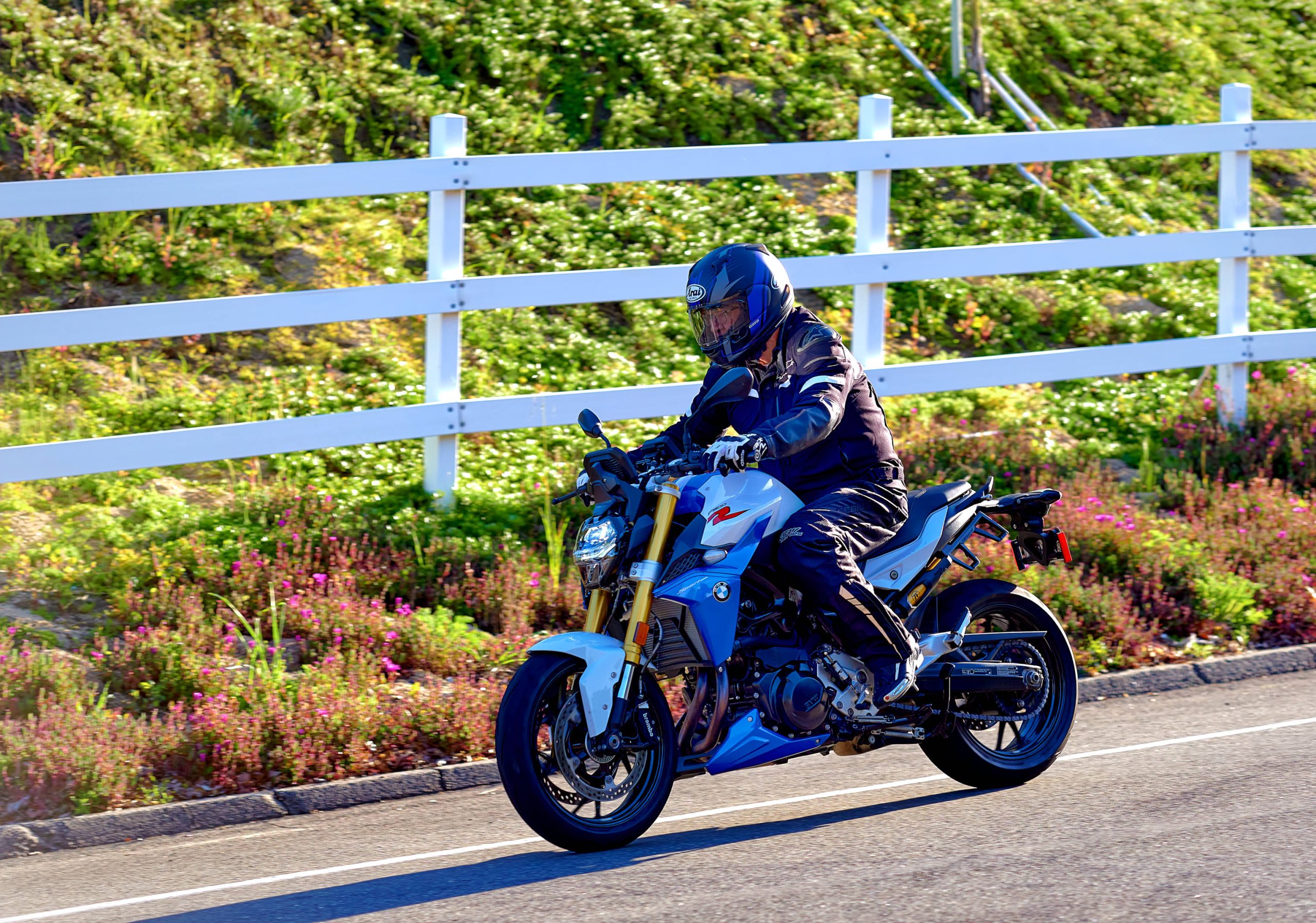
BMW makes a relatively inexpensive parallel-twin powered standard that was redesigned for the 2020 model year with a 270° crank. The F 900 R displaces 895cc and makes a claimed 99 hp at 8,500 rpm and 67 pound/feet of torque at 6,500 rpm. Just about all you need for street riding
The bike is also relatively light, coming in at 465 pounds with the smallish 3.4 gallon fuel tank topped off. For this class, it has relatively standard tire sizes with a 120/70 x 17 in the front and a 180/55 x 17 in the rear. Competitors, as you might guess, include the similar displacement, and quite popular KTM 890 Duke
The BMW features a steel frame and non-adjustable front fork with 5.3 inches of travel. The rear shock, in standard form, offers only spring pre-load and rebound damping adjustments with 5.5 inches of travel.
Radial mount Brembo calipers squeeze two 320 mm discs in front, while a rear single disc is 264 mm. ABS is standard on all of the trim levels.
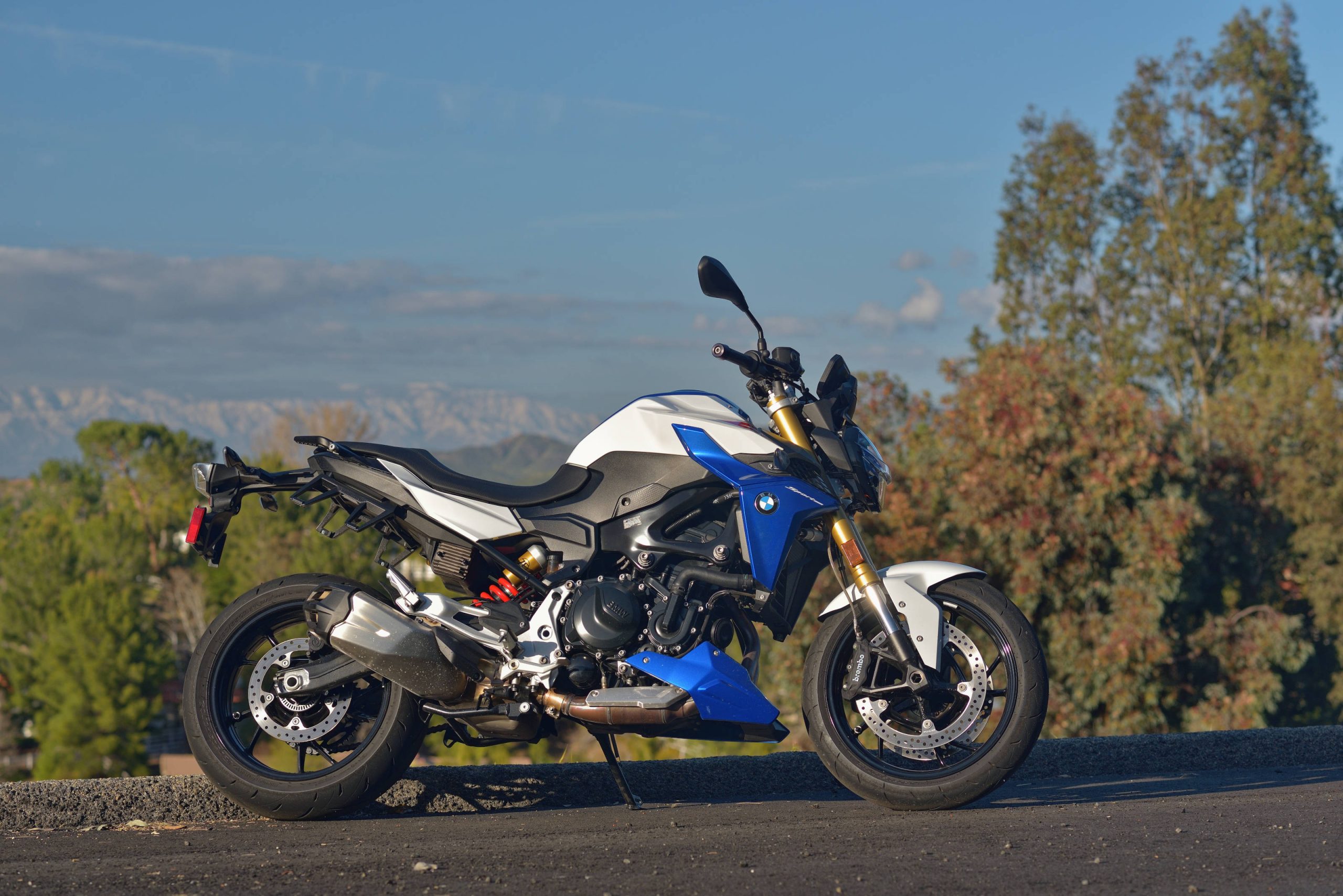
Lights are LED, and a modern 6.5 inch TFT display is utilized. The display is the center for control of a tremendous amount of information and electronic adjustability.
As you might expect from a modern BMW, there is a long list of accessories and options. Our test unit was top drawer, with keyless ride, heated grips, cruise control, dynamic electronic suspension adjustment (with electronically adjustable rear pre-load), what BMW calls “Ride Modes Pro“, which adds Dynamic modes to the standard Rain and Road settings. Also on our test unit was cornering ABS and dynamic brake control. I could tell you how to control all of this from the handlebar switches, but you might fall asleep and leave this article unfinished.
The dynamic electronic suspension on our bike, and other F 900s with the options maxed out, is only on the rear shock. The front fork remains a non-adjustable unit.
Our test unit was fitted with Dunlop Roadsport 2 tires, which offered decent grip and feedback.
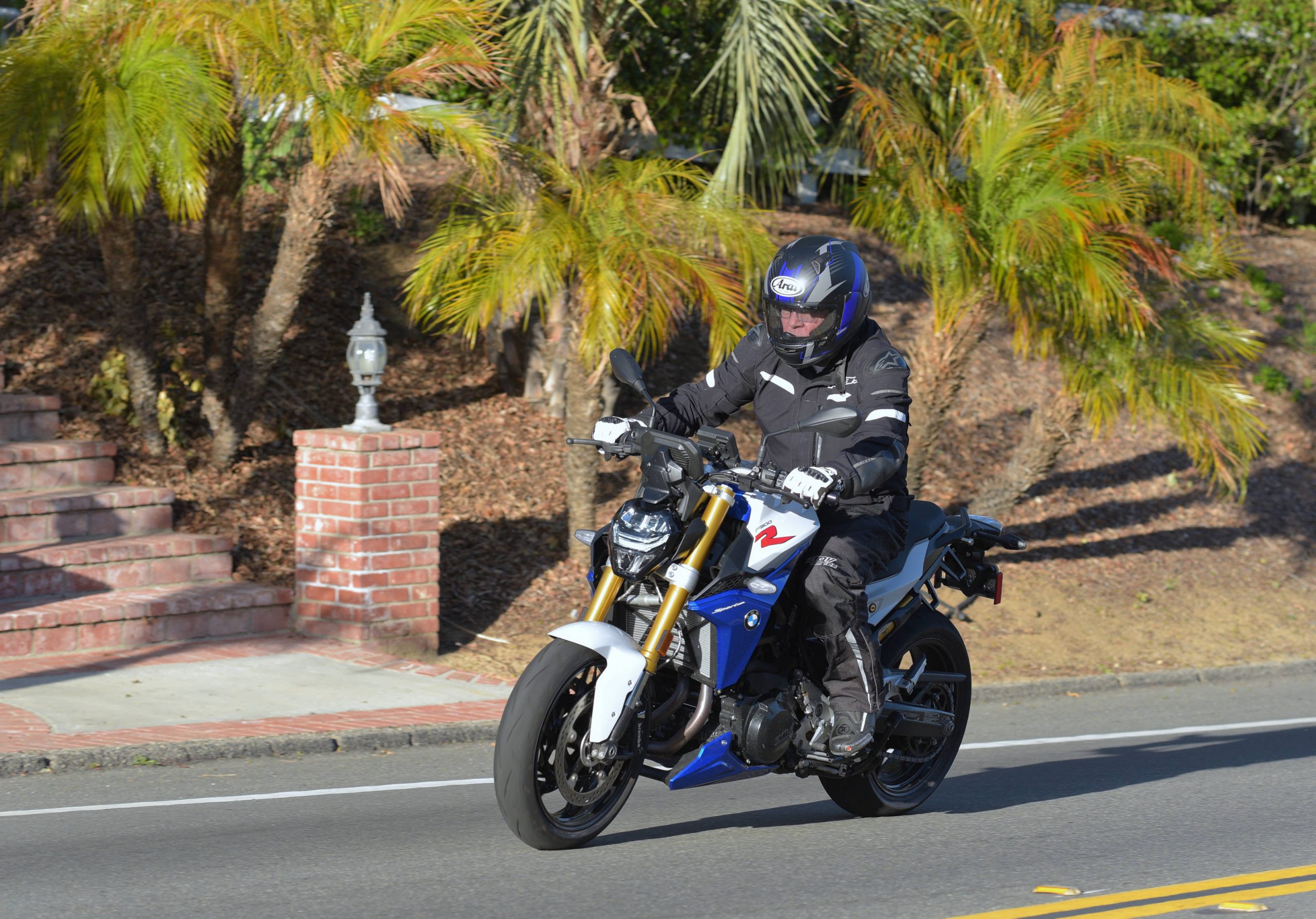
The riding position, as you can see from our photos, put our 5‘11“ editor in a reasonably comfortable, upright position. The foot pegs are relatively high and rearward for a standard- style motorcycle, however, and taller riders with longer inseams might find the position a bit tight.
The first thing you notice riding the F 900 R is the engine performance and character. In short, it is excellent. Fueling is well tuned to provide progressive, linear power, and the amount of torque from as little as 4,000 rpm is impressive. For street riding between 5,000 rpm and redline, power is always available and meaty. The engine character, as you might expect from a parallel twin with a 270° crank, is pleasing, and those power pulses help the rider understand a connection with the contact patch on the rear tire.
Once I figured out how to adjust the electronically controlled rear shock, I was quite pleased with the handling. The bike was under-steering in stock settings, so I added, pre-load by selecting “rider plus luggage“ for the rear shock. This put a bit more weight on the front end, and the handling improved dramatically.
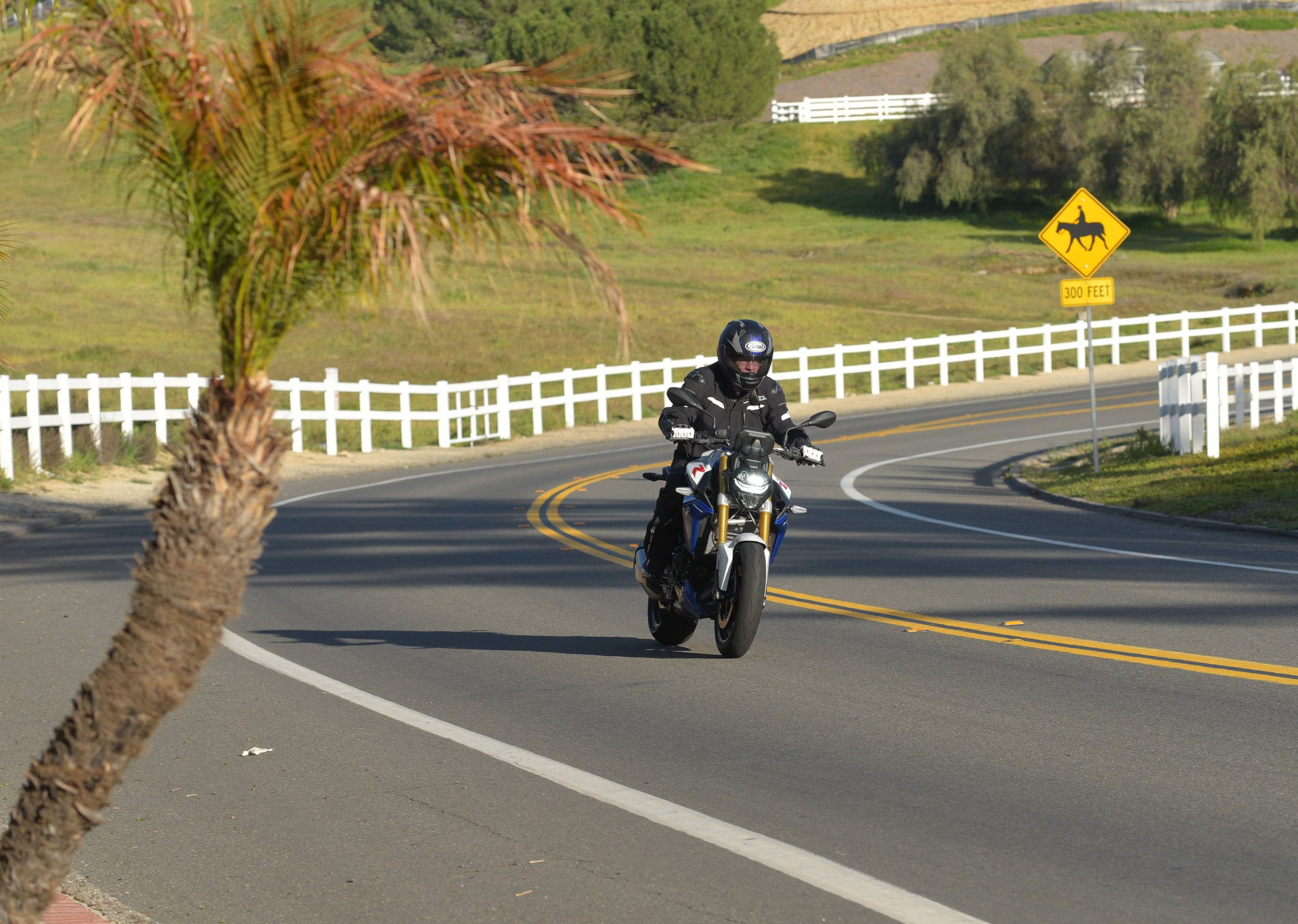
The standard Road setting for the rear shock was too soft and wallowy for aggressive riding, but once I switched to Dynamic mode, the dampening tightened up, and the bike was a blast attacking twisty roads.
The engine may not have the peak horsepower to compete with KTM‘s 890 Duke R, but it doesn’t feel that far off, and the low-end and mid-range might actually be a tad healthier on the BMW.
BMW has not changed the price of the base model since its introduction in 2020. It is stated as $8,995 US MSRP. The trick might be in finding a base model here in the United States. We hear from readers, and others, that most dealer bikes are optioned, at least to some extent. The premium package added $2,500 to the tab for the 2022 model year, but BMW seems to change these prices, and options quite frequently. The newly announced 2024 model is identical to our test bike, from a performance perspective, but option packages can vary when it comes to what is included, and what it costs. Take a look at BMWs website for details.
The bottom line is BMW has produced a fun, relatively affordable, parallel twin with plenty of performance and practicality. Our niggles include a seat that is comfortable for an hour or so, but then feels too hard, and the foot peg position, which could be a bit high and uncomfortable for taller riders with a longer inseam. Have a sit on one of the bikes at a dealership and draw your own conclusions about the ergonomics.
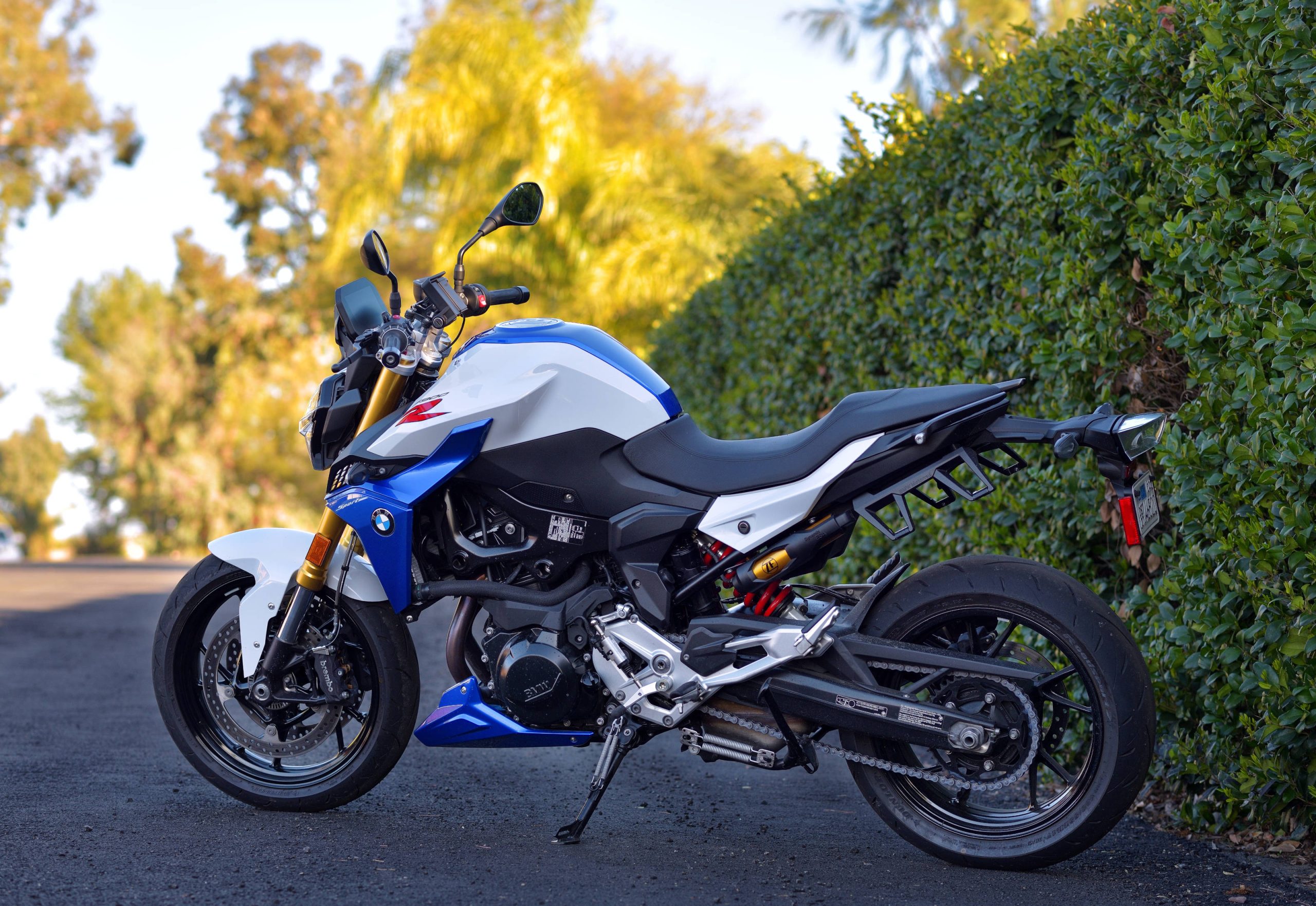






Whether it matters to a person or not the engine is sourced from China. I could not overcome that fact enough to buy one though I much greatly liked it on test ride and such. Aside from the high pegs with it’s tech and more roadster feel, it’s a better all around capable bike than most of the other nakeds in this class. It was disappointing to me to learn the engine is made in China. I also realize I sit here saying this probably a good portion of the clothes I’m wearing made there. Just saying.
All good reasons to go buy an MT-09 instead.
I like this bike but already have something better with my 690 Duke. What is more interesting to me than this one is the F900XR. It looks like a nice sport touring bike that I could get into. It might be competing in my head against the Tiger Sport 660, depends on how well either fits me. The V100 Guzzi would be nice but I’m not sure it’s worth more than these two.
Go ride a Tracer 9 GT first.
I’ll be making a new bike purchase in the next 12 months (selling 5 to buy 1). I haven’t yet decided on a “genre” of bike, but a capable/comfortable naked like this is certainly one of the categories I’m considering…and yet…this bike wasn’t even on my radar. Now it is.
I also like the V100 and the not-yet-announced for the US 890 SMT.
These new 270° crank twins, all seem to fill the void of the old UJM. Normal seating, normal pegs and handlebars, and the evolution of the basic Triumph 650 sort of motorcycle, and can I say a better CB750? With Suzuki Honda Yamaha BMW all having their version or something like it, coming out soon, I cant wait till they all finally get here to read the comparison. Maybe like You, I might be downsizing my other machines, only to get something like this, lighter, but still big engine as maybe like you I started on Honda 50. And the prices of these, destroy the resale value of many used machines.
I started on a (new) ’73 Suzuki TS50 when I was 10…I can brag that I learned with a 5-sp/clutch. Right now my newest bike is a 2005 FZ6. Also in the garage is a ’98 ST2, ’02 DRZ400SM, ’76 CB550F and a 650 Cafe Racer made from all sorts of parts (probably my most valuable bike). I’m real tired of maintaining old machines – and as I near retirement I want one bike that can make me happy 90% of the time. My #1 requirement is it has to be fun, followed closely by comfortable. I value light weight over high power, great suspension over great looks. Rider aids that I *think* I don’t need now, might be very important in 5 years…so I want ’em all and will be happy to pay for them (once).
It’s kind of sad that the premium package doesn’t include something other than the budget bike fork. BMW is stingy that way.
I’ve taken a lot of hard crashes. But I’ll have to take a whole lot more before I get excited about more and more electronic gizmos on my motorcycle. But I’d pay the twenty-five hundred bucks for a high quality suspension upgrade in a heartbeat.
I guess all those free magazine subscriptions that keep showing up and press releases in general have failed to indoctrinate me into thinking that electronics are a value add on a motorcycle. Quality components yes, electronics no.
“Old man yells at cloud”
Just for once, I agree with Mick. A certain level of complication is valuable but a lot of the modern electronic stuff is there ‘just because they can’ or to compensate for choices made in the spec, such as excessive power output. IMO, of course!
I agree. I haven’t yet experienced an electronic feature that has actually improved performance without hindering that last 10% fringe. I like bikes that allow you to take them right up to the ragged edge and play with subtle control inputs. It seems every accessorized bike now has always dialed back a little when I have attempted to get the most out of it. Better components give you more control, more precision. Electronics just take away that control and precision.
I question the general direction of the industry. The venue hasn’t changed and neither has the average rider. Yet now a 895cc 99hp bike is a “middle weight” built to a price. Don’t hold your breath waiting for the S model that comes with good suspension. To get that you have to buy something north of 1000cc that makes more power than a Miata.
Does all this seem rather excessive given the public road venue? No problem! For a few dollars more, you can access all sorts of settings through the holy TFT dash. We’ll even replace the non-serviceable budget bike shock with another one that has settings. You have standard use, wallow, pogo, and bottoms out on anything. Brilliant!
Pappa bear killed momma bear and Goldilocks and fed them to baby bear who now weighs 400 pounds.
How’s that? You think the cloud heard me? Does it care?
Mick, I agree. No need for any electronics on 900cc twin naked bike. Proper use by the rider is the way to control the bike. Like you say, take the electronics money which actually wouldn’t be much and pour it into the components.
With that said looks like a nice machine.
Don’t know how I survived 45 years of riding without rider aids. It must boggle the minds of all the tech engineers trying to dream up the next “nannie” to keep us alive out there.
On the street, if you need the latest rider aids, you’re probably going too fast. Remember, there are racetracks for the proper use of a 180 hp bike with all the electronic nannies you could wish for. Otherwise, just enjoy the ride. You’ll live longer.
I fitted my 2021 with the available extra tall seat. That got me enough legroom for comfort. I also fitted a Wilbur shock, which was a big improvement over the non-ESA dog turd that came stock. Also, Wunderliche bar risers improved comfort even more.
The only way to get a minimally optioned bike from BMW is to order it, spec’d out the way you want it. BMWNA will bring every bike into the US fully loaded, unless a dealer or customer specifies something different. Order it in August and get the new model year and have in December. For those in the snow belt, ask the dealer to store for you at no cost, till spring.
The F900R is a nice bike.
The Royal Enfield 350 Classic has a 3.4 gallon tank. So too does this far thirstier and far more expensive BMW. How does that make sense?
It does not.
That is just stoopid, cheap and an insult to riders. For those out there that whine, “Ooooo…After about an hour I’m ready to get off the bike because my bumby hurts and I have to go potty too!” FTN.
BMW – The Legendary Bar-Hoppers of Germany…
ORT
Most bikes of this type have similarly sized fuel tanks. The riders that bikes like this are targeted at don’t ride 3 hour stints and don’t care that it doesn’t carry 5+ gallons of fuel.
Even if used for shorter commutes, having to stop at the gas station every other day, sucks.
The smaller tanks, do help with ergonomics for smaller riders. Smaller rider suitability isa concern for BMW with the R900s, since their other lines are all rather huge and sized for big Germans.
Nothing that qualifies as a “shorter” commute would require refueling that often. I had a Honda Superhawk (small-ish tank, notoriously poor mileage) and with my 34 mile round trip commute I needed to fuel up every 4 days.
My FZ6 has a 5-gal tank. At about 40-45 MPG I wouldn’t want less.
I think it falls into the modern problems catagory. Older four cylinder bikes were wider and had carburetors that pointed aft, leaving a lot of empty space in the traditional gas tank location. Now there are narrower twins with down draft systems that share space in the gas tank location with the air box. Make a tank that holds five gallons and people aren’t going to like how it looks. Put the gas tank were the air box used to be and you are stuck with a confined area that shares space with the rear shock.
There is a 6.5 gallon tank for my Hypermotard that still fits inside all the bodywork, which completely covers the long narrow gas tank that runs from the stearing head to the back of the saddle. It does that by eliminating the air box in favor of some small pod filters. You are then stuck with small difficult to access air filters that need frequent service and a lot of intake noise. No thanks.
Tank capacity has decreased with the introduction of the huge air boxes under the tank that feeds the carburetion. Bigger air boxes give more horsepower and horsepower will trump fuel capacity every time in the minds of the designers these days. This is especially true for performance bikes. They want to eke out every ounce of horsepower to be competitive with other manufacturers.
I think a 4 gallon tank would be minimum for a bike like this BMW and remember that not everyone who buys this bike is a commuter, but actually goes places on the weekends. Those that can only afford one bike will appreciate the increased fuel capacity that some manufacturers offer. I believe many bike decisions are made based on things like range rather than performance. I’m a rather logical person and appreciate extra fuel as I am not continually concerned whether I have enough fuel to make it to my next stop.
But that’s just me.
Almost, but not quite.
A lot of intake system design is now dictated by emissions regs, not by engineers chasing horsepower.
How does airbox/size affect emissions? What regulations are there that dictate airbox design?